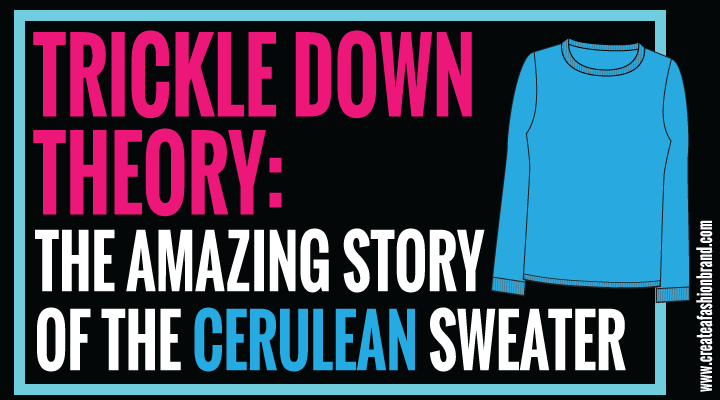The Trickle-Down Theory (Veblen, 1899 & Simmel, 1904):
fashion is a process of emulation by which new fashion passes from the upper class to the lower and in their descent, fashions are vulgarized and a new fashion cycle starts…..
Now at the time this quote was written, we’re talking about the turn of the 20th century, the ‘social classes’ was an extremely prominent deciding and identifying factor of society. But to re write it in basic English, the process starts at the top, which during this time was the rich, as clothing was made individually for each client by a dressmaker. In today’s society, many people assume that this is the catwalk designers, which for most styles, themes and garments, would be correct, but for colour, this is actually the Paris Colour Council. Colour has the extra step process, so is a great way to show the Trickle Down Theory process.
Unfortunately not a lot is known about it other than the industry leaders make it up and they decide colours around 4 years before the real season begins. The information discussed and created within this council is a closely guarded secret and information then starts to trickle down to luxury cloth manufacturers to be ready for the designers to craft. For design and theme however, this of course is somewhat dictated by a colour palette, but of course designers will create collections that they choose by selecting the fabrics and colours that are available and they want.
These are then shown on catwalk shows, department stores then stock these designer clothes and lower end retailers use their own designers to both predict the trends coming up and when the catwalk shows are released, they are also used to create ‘fast fashion’ collections.
This process is wide-spread a covers all sorts of retail, from value to mature end clothing, sportswear and of course the young and trendy shops. partly this is due to the manufacturing of cloth and available fabrics and yarn. This will tell you exactly why the colours and textures of materials are available at a particular time. So if you are starting a new brand or a designer, understanding how this works will help you make choices on your design elements or the restrictions on your dressmaker or factory to source or find materials and components for you.
Have a listen to the rant from The Devil Wears Prada film in 2006. Whilst some of this film is a complete fabrication of the truth, this little rant by Gwen Close, the actress, is actually pretty darn good and the infographic below gives you the full quote
You can test the theory now. If you are honing your trend prediction skills, have a look at what is in store now on the high street. You should look at retail multiple chain brands and then work backwards. This is the stage that isn’t mentioned in the Glen Close rant and goes between the “Department Store” and “Bin” stage. Try to link the shapes, colours, prints and fabrics you see in store with the designs for the catwalks that were shown in Paris, London Milan and New York for that season. [Remember the season shown will be up to 6 months before today’s date. Either February or October]. See if you can find a link or path from the catwalk images through to the retail shops you have on your local high street.

